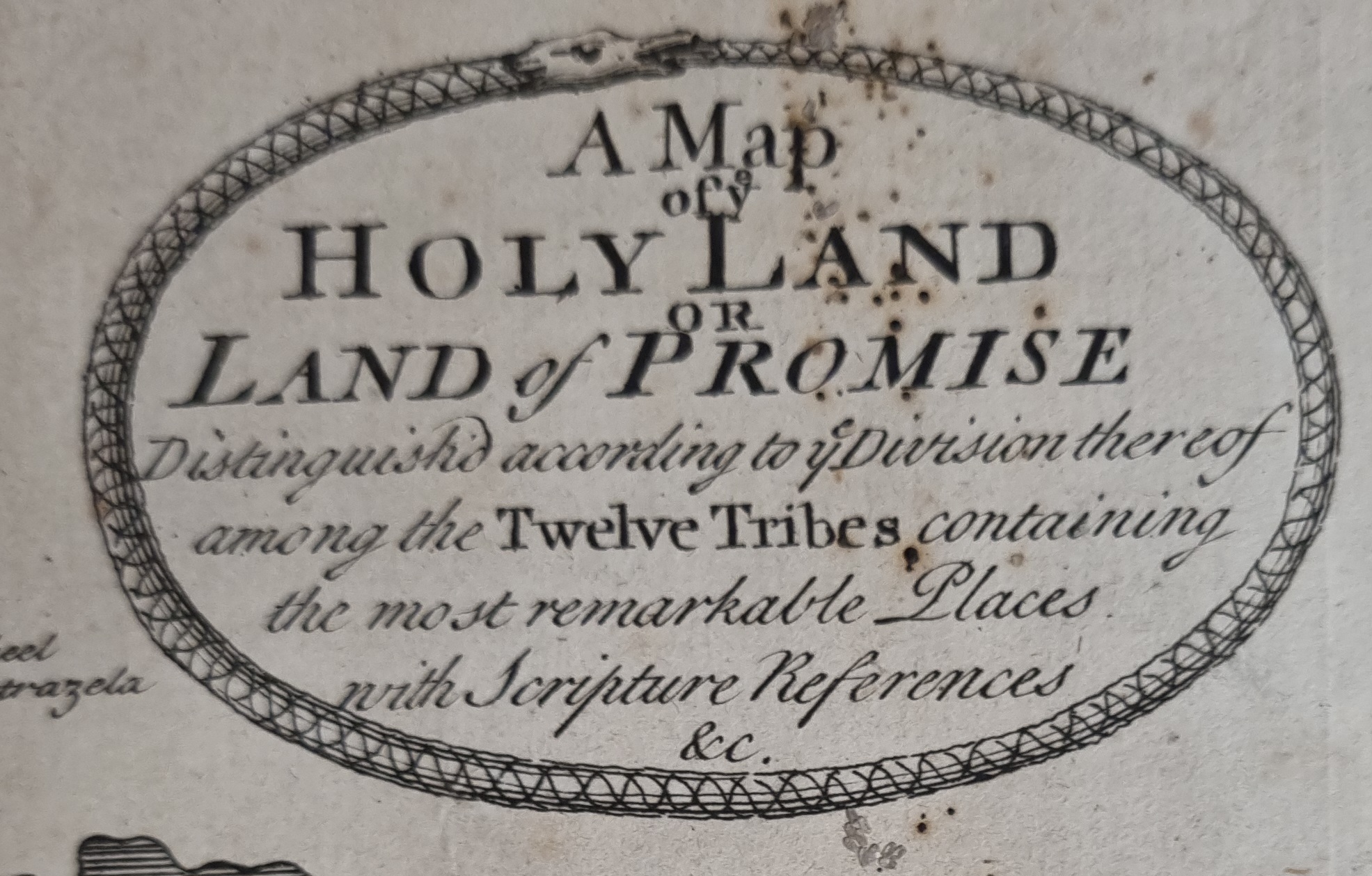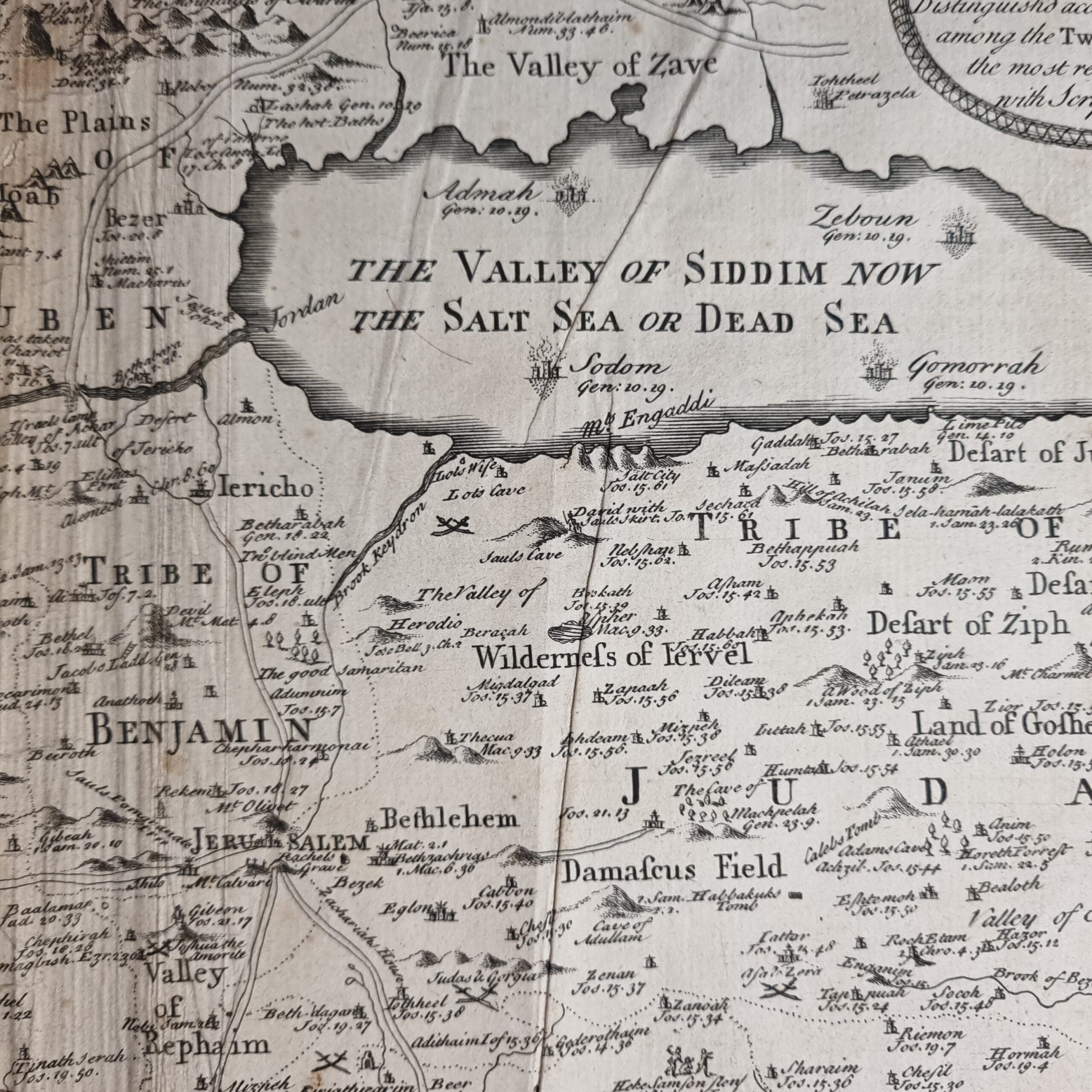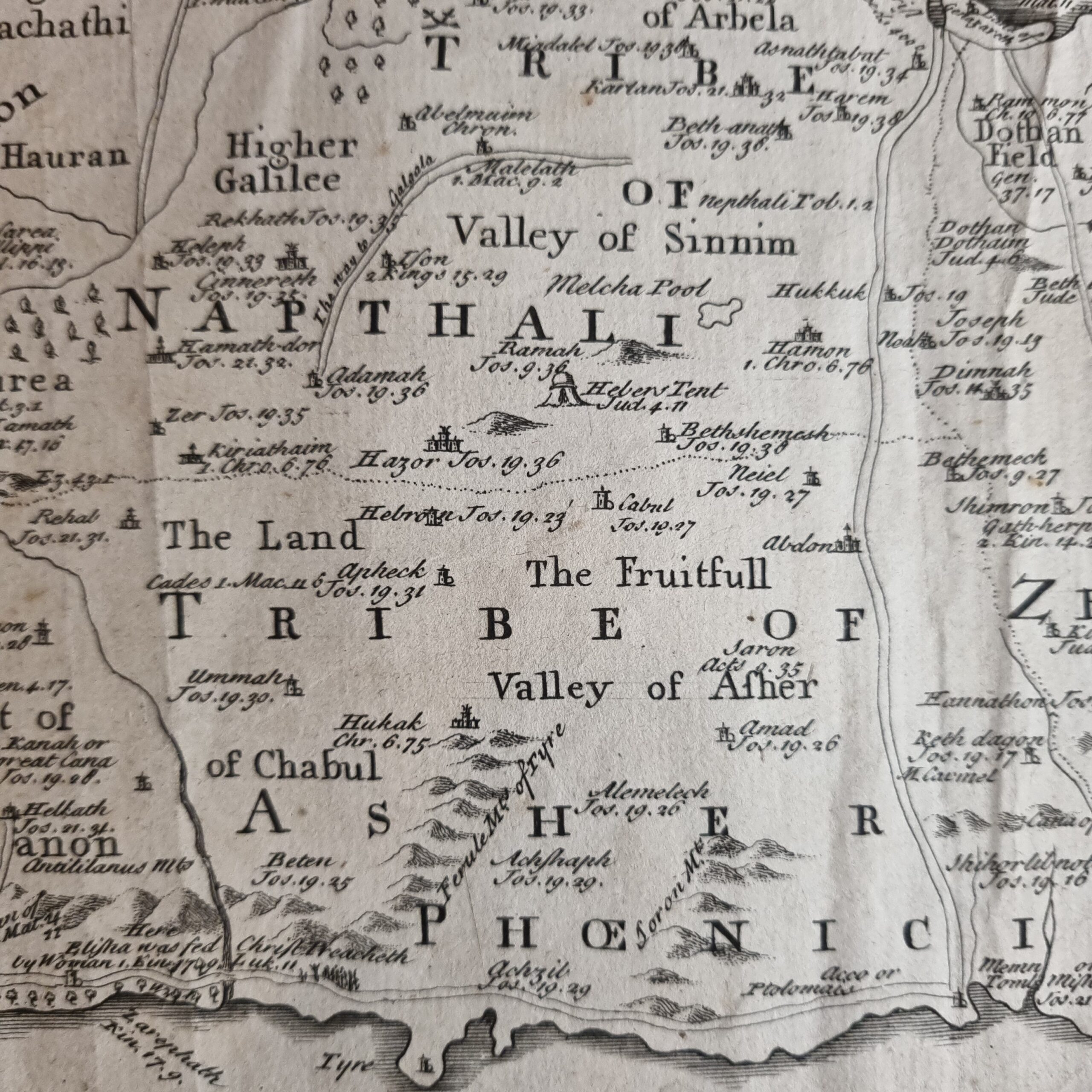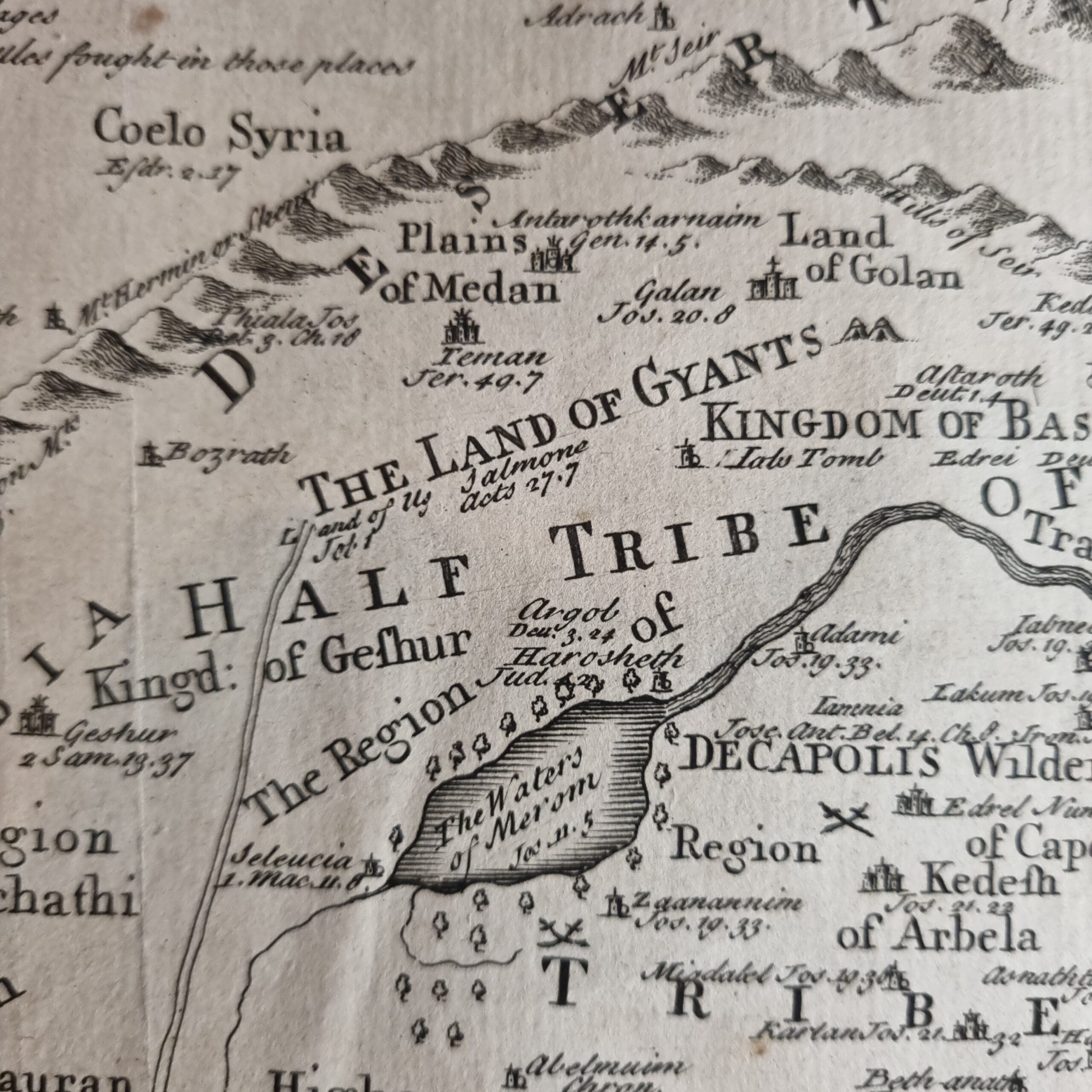Distinguished according to division thereof among the Twelve Tribes containing the most remarkable places with scripture references. Marked Hulett Sculp:
- Historical Context: The Hulett Sculp would have been used to craft detailed and accurate maps of regions such as the Holy Land. Given its time of use, it might have depicted the land as understood in the late 19th century, incorporating both contemporary knowledge and historical interpretations.
- Cartographic Detail: The Hulett Sculp would have allowed mapmakers to include intricate details of the terrain, which would be crucial for accurately representing the diverse features of the Holy Land, from mountains to river valleys.
- Religious and Historical Features: Maps created using the Hulett Sculp might include significant religious sites and historical landmarks relevant to biblical narratives, providing a visual representation that combines geographical accuracy with religious significance.
- Technical Aspects: The tool or technique might have been known for its precision and the ability to depict various scales and topographical details, which would be valuable in producing maps used for scholarly, educational, or religious purposes.
Additional information
| Weight | 200 g |
|---|---|
| Dimensions | 55 × 32 cm |






